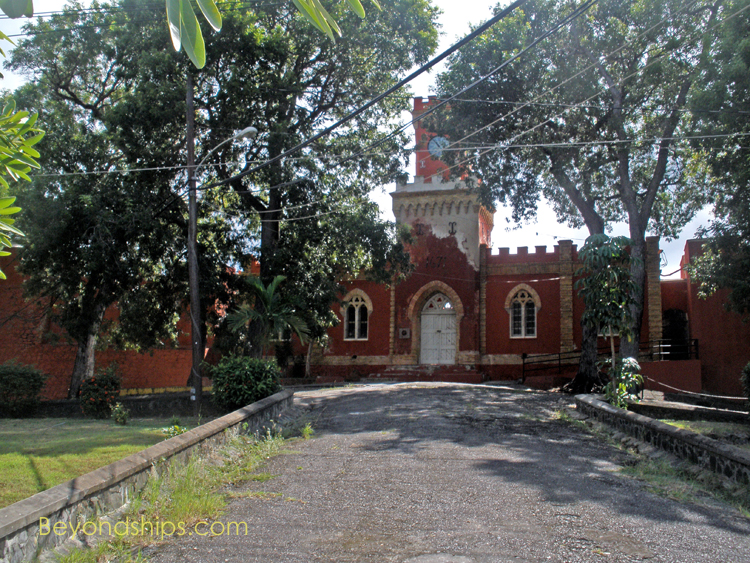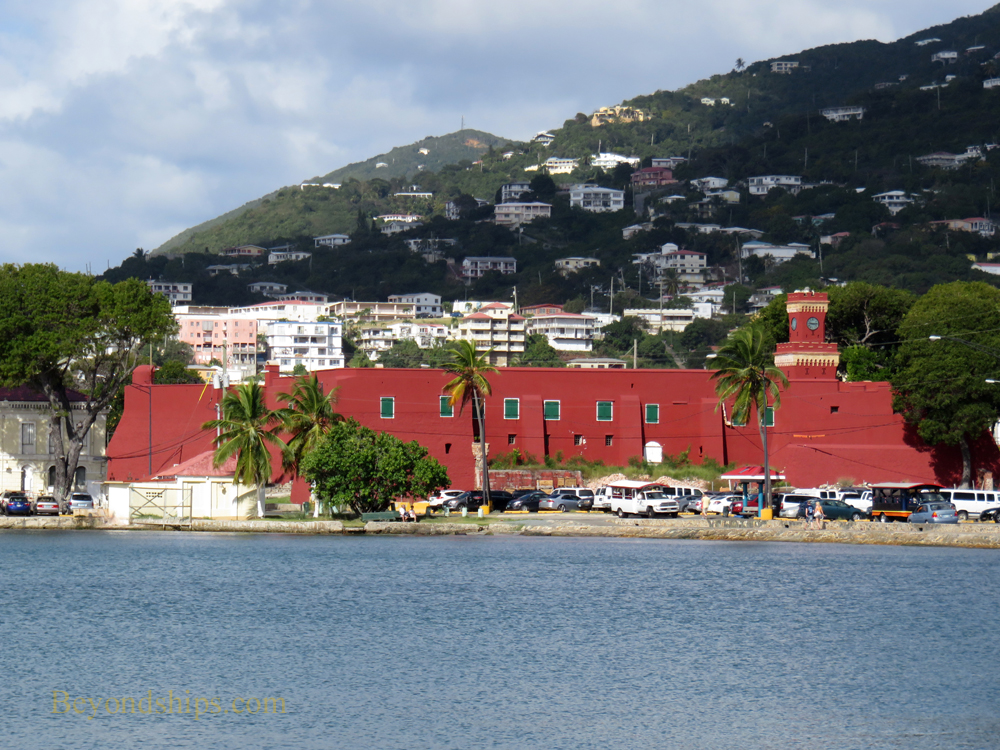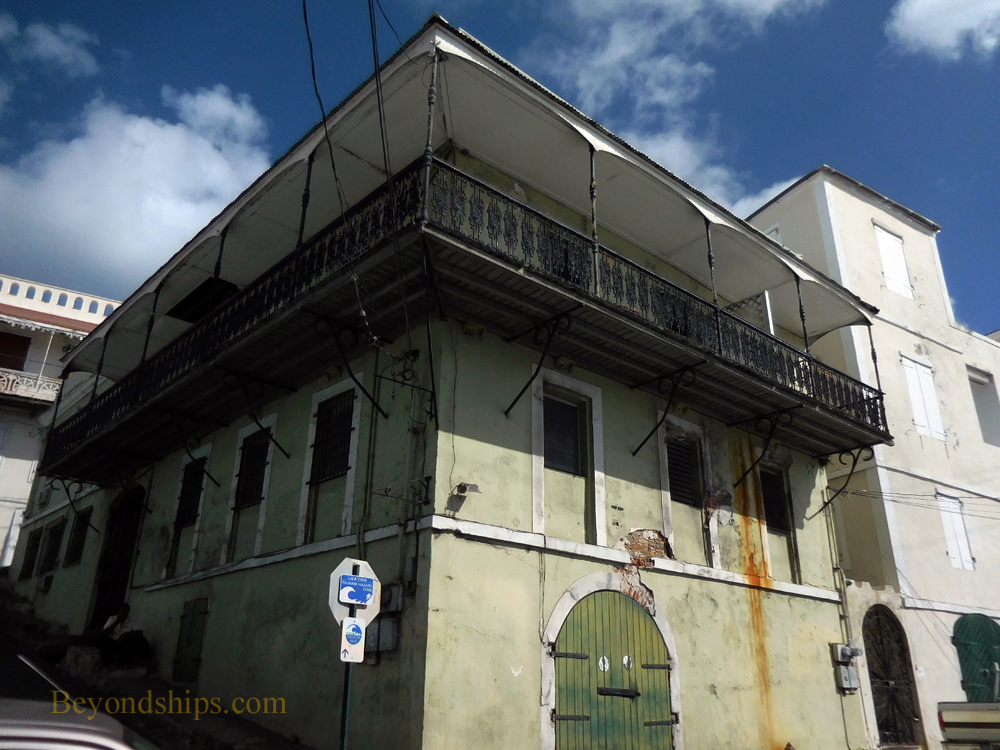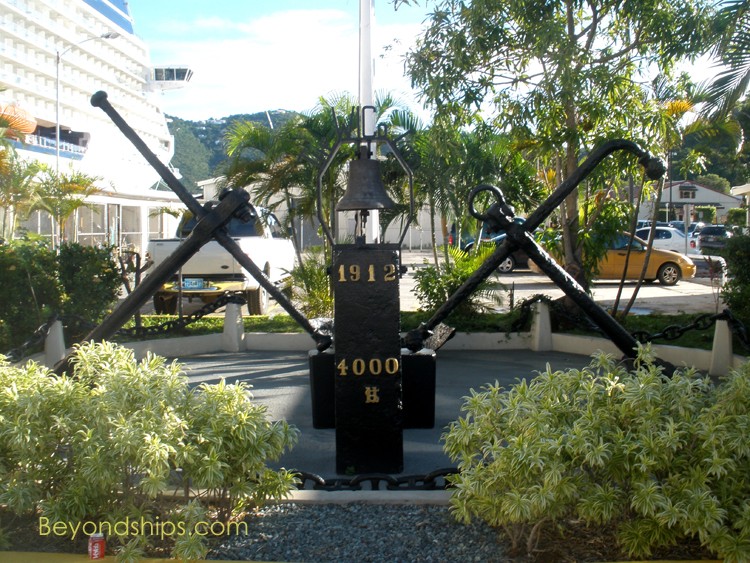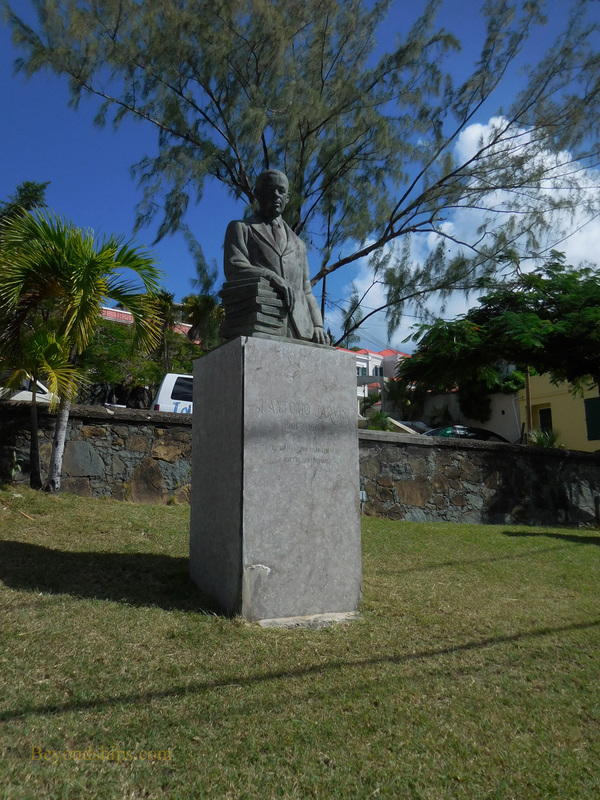|
Above: Fort Christian was dedicated in 1678 and is one
of the oldest structures in the Virgin Islands. It was built as part of the Danish colonial fortifications. Below: Charlotte Amalie still has many Danish colonial buildings. Above: A monument at Havensight recalls the days when Charlotte Amalie was an important trading port for
sailing ships Below: A WPA era mural in the main post office in Charlotte Amalie also pays tribute to the island's maritime history. Below: A statue of St. Thomas educator, historian and author J. Antonio Jarvis.
|
Brief History The earliest inhabitants of St. Thomas are believed to have
been the Ciboney Indians who settled there around 1500 BC. They were displaced by the Arawak people who were in turn conquered by the Caribs. During his second voyage to the New World, Christopher Columbus came across the islands and named them the Virgin Islands in honor of St. Ursula and her 11,000 virgins. Contact with the Europeans was a disaster for the Caribs and within a few decades very few were left on the island. According to local legend, during the second half of the 16th Century, English privateers led by Sir Francis Drake used St. Thomas as a base for raiding the Spanish Treasure fleets that were carrying gold home from Spain’s New World colonies. Legend also has it that in the coming centuries the island was a base for pirates. In the 1657, the Dutch West India Company established a post on the island. However, by 1666, Captain Erik Neilson Smith with the support of the Danish King Frederick III was made the official governor of St. Thomas and by 1672 the Danish West India Company had acquired the entire island. The Danish company’s plan was to bring Danish convicts to the Virgin Islands to work on sugar plantations. These convicts from Northern Europe proved unsuited for the heat and disease of the tropics and so the Danes began to import African slaves for the plantations. This unfortunate scheme was successful and some 200,000 slaves were brought to the Danish Virgin Islands. While the other nearby Danish possessions of St. Croix and St. John maintained a plantation economy, St. Thomas became an important center in the slave trade holding some of the largest slave auctions in the world. The island came under direct control of the Danish government in 1754, becoming a Royal Danish colony. Its port city, Charlotte Amalie, is named after the wife of King Christian V. In 1792, Denmark announced the cessation of the slave trade. In part due to a slave revolt in St. Croix in 1833, slavery was abolished in 1848. As a result of this and the discovery of the sugar beet, the sugar cane plantations were no longer viable and the economy of the islands went into decline. St. Thomas with its fine natural harbor did have strategic value and the Danes entered into discussions with the Americans to purchase the Danish Virgin Islands in the 1860s. Nothing came of these discussions until the outbreak of World War I. Concern that Germany might acquire the islands and establish a naval base there thus threatening not only the Caribbean but also the Panama Canal, led the United States to purchase St. Thomas along with St. Croix and St. John for $25 million in 1917. The three islands along with a number of smaller islands then became known as the United States Virgin Islands. Underscoring its strategic importance, St. Thomas was administered by the U.S. Navy for more than a decade. During this time, inhabitants of the Virgin Islands gained U.S. citizenship (1927). In 1931, administration of the island was shifted to the Department of the Interior. A few years later, a legislature called the Senate was established. In 1954, the U.S. Virgin Islands became an official territory of the United States. Full home rule came in 1970 and the islands elected the governor for the first time. |
|
|
|
Cruise destination - - St Thomas (Caribbean) - Brief History
